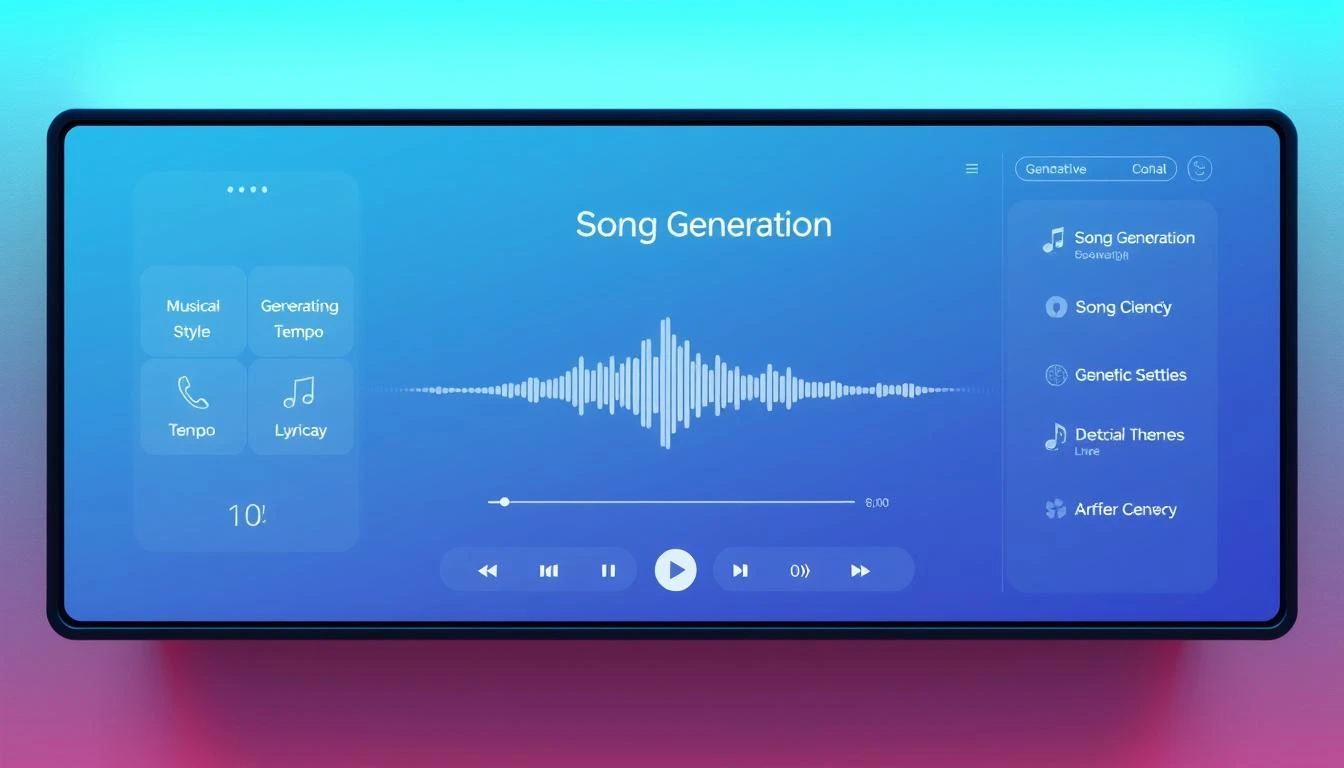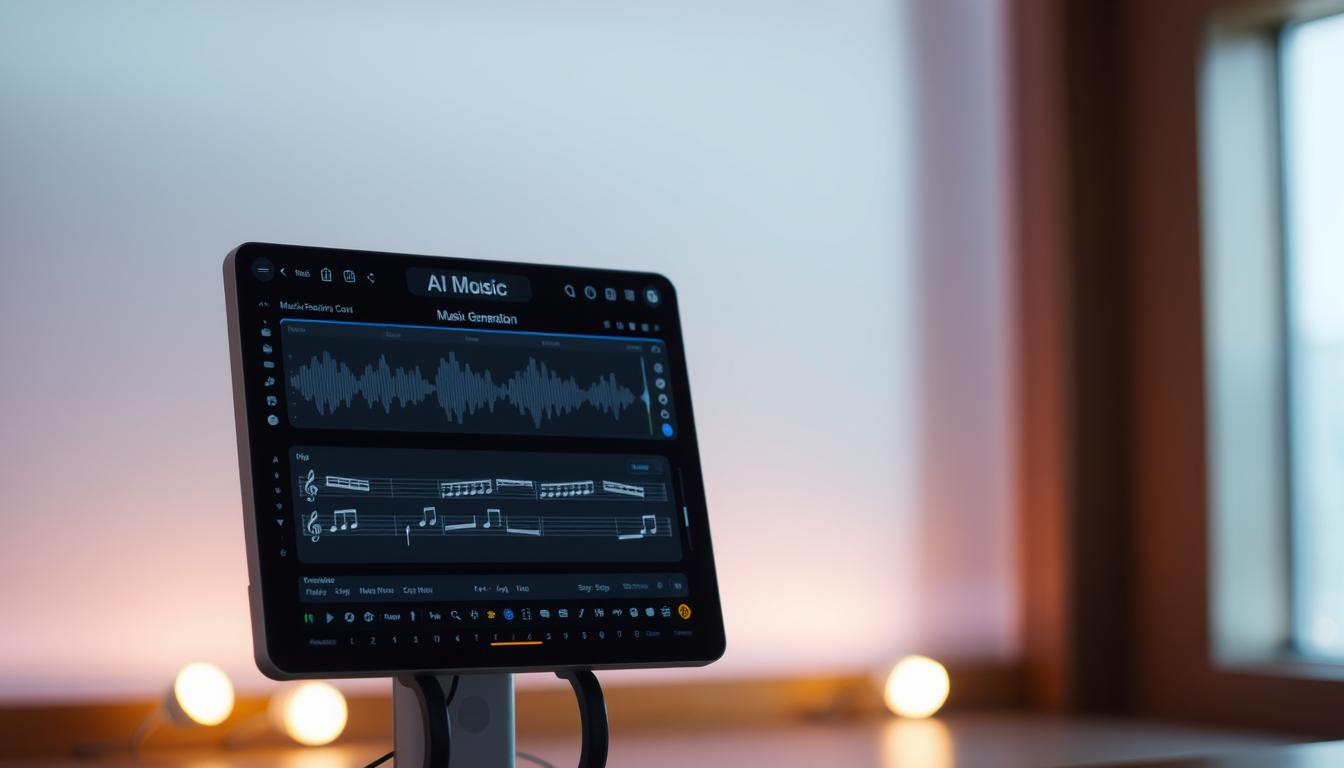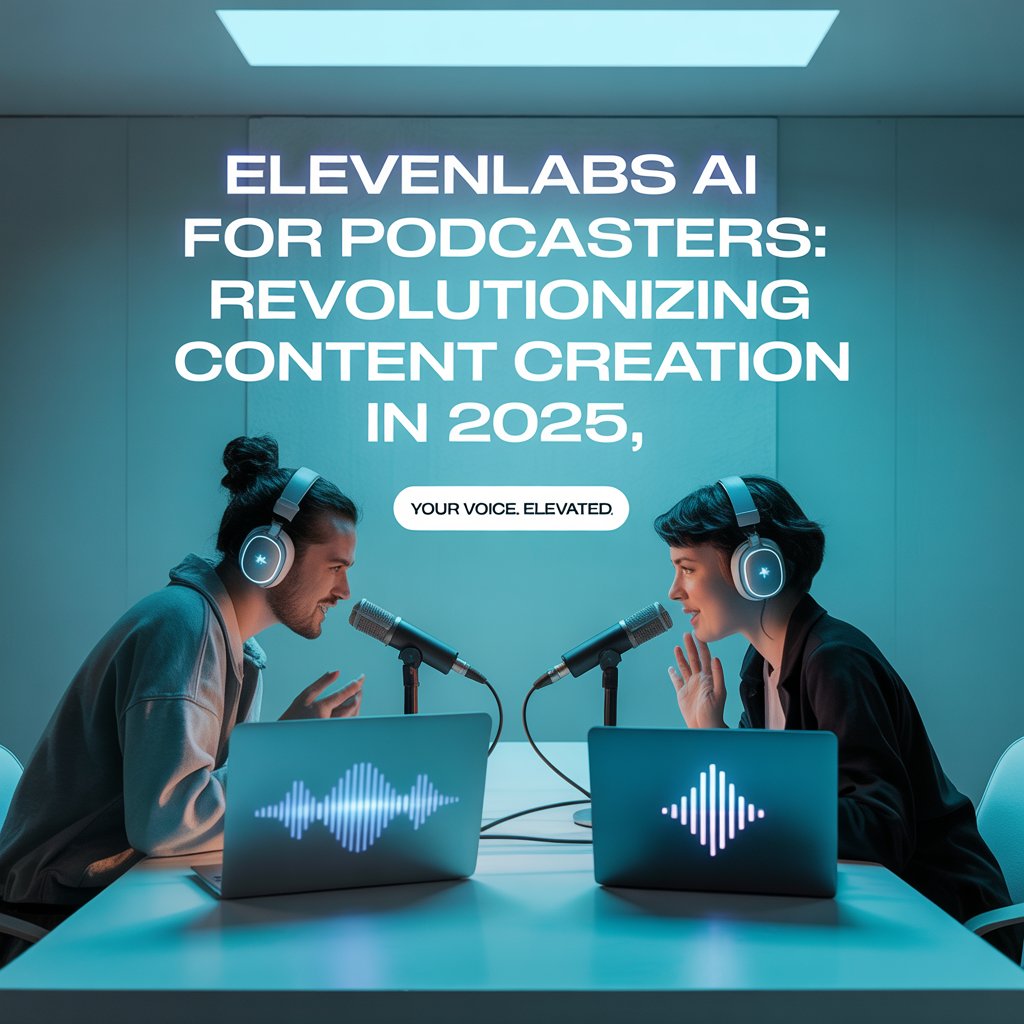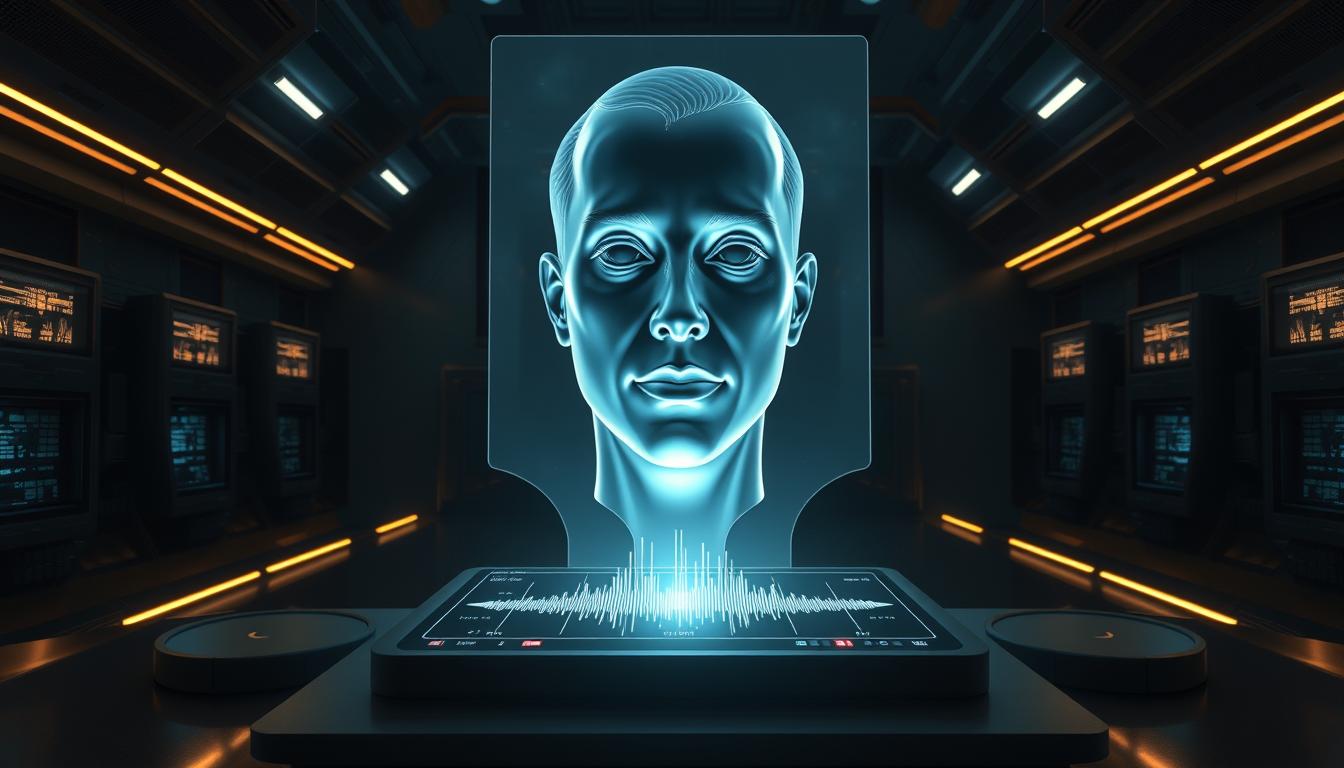Imagine making a song without needing to play an instrument or know music theory. Suno AI makes this dream come true. It lets users create original songs, lyrics, and music with just a few inputs. let’s go to Suno AI Tutorial
This innovative tool is changing the music world. It offers a simple way for anyone to make music. Suno AI lowers the barriers to music creation, letting everyone become a music maker.
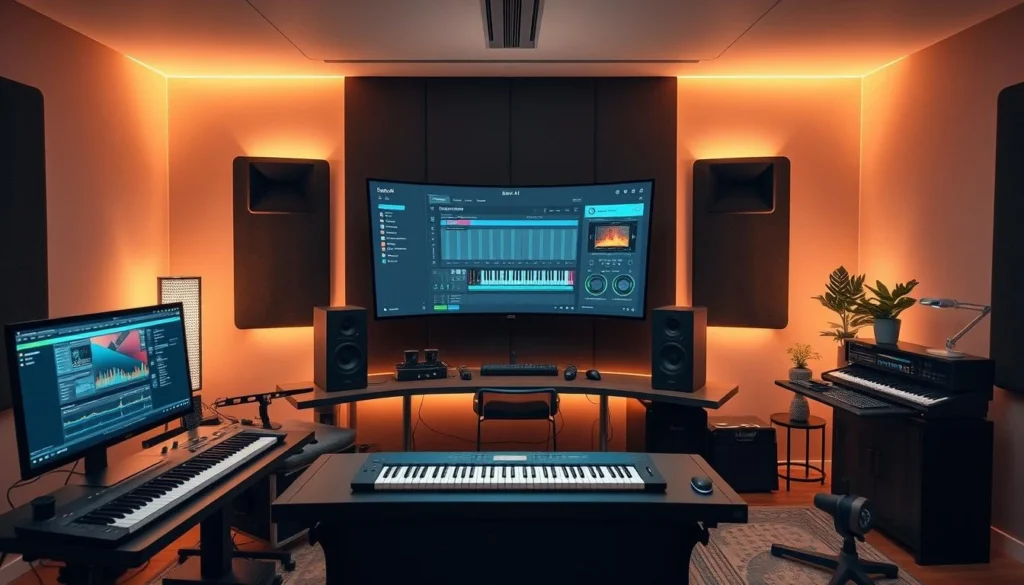
In this beginner’s guide, you’ll learn how to use Suno AI to make your own music. We’ll explore its features and what it can do. Whether you want a simple tune or a complex song, we’ll show you how to do it step by step.
Key Takeaways
- Understand the basics of Suno AI and its role in music creation.
- Learn how to generate original songs, lyrics, and instrumentals.
- Discover the user-friendly interface designed for beginners.
- Explore the impact of Suno AI on music creation.
- Get started with creating your first song using Suno AI.
What is Suno AI and How Does It Work?
Suno AI is a cutting-edge technology that turns text into music. It uses a smart AI model trained on lots of music. This model can make music from text, write songs with your lyrics, and even copy different music styles.
The Technology Behind Suno AI
The heart of Suno AI is its advanced AI model. It’s trained on a huge variety of music. This training lets Suno AI understand and copy many musical styles.
The tech uses natural language processing (NLP) to turn text into music. It breaks down the text, finds the music’s key parts, and then creates melodies, harmonies, and rhythms.
Learning how Suno AI works is key to its natural language processing tutorial. Its vast training dataset lets it make music that fits the text perfectly.
Capabilities and Limitations of AI Music Generation
Suno AI can do a lot for music makers. It can create full songs from simple text prompts. You can also add your own lyrics, making the music truly yours. Plus, it can copy many music styles, from pop to hip-hop.
But, Suno AI isn’t perfect. The music quality depends on the text’s detail. Sometimes, it might not match what you had in mind. Knowing these limits helps use Suno AI better in a Suno AI tutorial series.
Even with its flaws, Suno AI is a big step forward in AI music. It opens up music making to more people, no matter their skill level.
Setting Up Your Suno AI Account
Before you start making music with AI, you need to set up your Suno AI account. This first step is key to using the platform and starting your music-making journey.
Creating and Verifying Your Account
To make an account on Suno AI, go to suno.com and pick how you want to sign up: Discord, Google, or Microsoft. After picking your method, you’ll need to give Suno AI the right permissions. Then, follow the instructions to verify your account and turn on your profile.
Verification is a key step. It makes sure your account is safe and you can use all of Suno AI’s features without limits.
Exploring the Dashboard and User Interface
After verifying your account, log in to see the Suno AI dashboard. The interface is easy to use, with important features and options right in front of you.
Key Features and Navigation Tips
Get to know the navigation menu. It has options for making new songs, looking at your generation history, and changing settings. The generation credits system is also important to understand, as it shows how many songs you can make.
- Check out the generation credits and how they work.
- Look at the settings to make your experience better.
- Use the navigation tips to move around the platform easily.
Understanding the Generation Credits System
The generation credits system is a big part of Suno AI. It tells you how many songs you can make. Knowing how to handle your credits is key to getting the most out of the platform. You can learn more about credits in your account settings or the help section.
By following these steps and learning about the Suno AI interface, you’re ready to start making your own music. Next, you’ll learn how to prepare for your first song, including understanding the song creation process and finding inspiration.
Preparing for Your First Suno AI Song
To start with Suno AI and make your first song, you need to prepare. You must understand the workflow and find inspiration. This step is key for a smooth and creative song-making process.
Understanding the Song Creation Workflow
The song-making process in Suno AI is easy, for both experienced musicians and beginners. You can choose between Simple Mode and Advanced Mode. Simple Mode is great for quick song creation with little input. Advanced Mode lets you control the song’s structure, melody, and more.
Knowing this workflow helps you use Suno AI well. By learning about the different modes and options, you can make your song-making experience better fit your needs.
Gathering Ideas and Inspiration
Finding ideas and inspiration is essential for song creation. You can draw from personal experiences, themes, or musical styles. Having a clear idea of what you want helps you use Suno AI better.
Explore different genres like pop, rock, or electronic to find what inspires you. You can also get ideas from your favorite songs, artists, or even nature or literature. The more inspiration you have, the better you can use Suno AI to create your music.
By understanding the workflow and gathering inspiration, you’re ready to make your first Suno AI song. This preparation makes the process fun and helps you get the results you want.
Complete Suno AI Tutorial for Beginners
To start with Suno AI, follow this easy guide. Suno AI makes music creation simple for everyone.
Step1: Accessing the Song Creation Interface
The first step is to get to the song creation interface. Log in to your Suno AI account and go to the dashboard. Look for the “Create Song” button.
Click “Create Song” to start making your music in the interface.
Step2: Choosing Between Quick Create and Advanced Mode
Suno AI has two main modes: Quick Create and Advanced Mode. Quick Create is great for beginners. It lets you make a song fast with little input. Advanced Mode gives you more control over your song.
Beginners should start with Quick Create to learn the platform.
Step3: Understanding the Available Options
After picking your mode, explore the options to customize your song. You can choose:
- Genre Selection
- Mood Settings
- Tempo Controls
Genre Selection
Suno AI has many genres like pop, rock, electronic, and hip-hop. Picking a genre tells the AI what music style you want.
Mood Settings
The mood setting lets you set the song’s emotional tone. You can choose happy, sad, energetic, or relaxing.
Tempo Controls
Changing the tempo changes the song’s speed in beats per minute (BPM). This affects the song’s feel.
| Option | Description | Impact on Song |
|---|---|---|
| Genre Selection | Choose the style of music | Determines the overall style and sound |
| Mood Settings | Influence the emotional tone | Affects the listener’s emotional response |
| Tempo Controls | Adjust the song’s speed | Impacts the energy and pace of the song |
By using these options, you can make a song that fits your vision. Try different settings to find what works for you.
Crafting Effective Prompts for Suno AI
Learning to create prompts for Suno AI is a valuable skill. It helps you get the music you want. Knowing how to structure your prompts is key.
The Anatomy of a Successful Prompt
A good prompt for Suno AI has a few important parts. It should use descriptive language elements to clearly describe the music you want. This includes the mood, genre, and instruments you prefer.
Descriptive Language Elements
Descriptive language helps Suno AI get your exact request. Instead of “happy song,” say “an upbeat, energetic track with a lively piano melody.” This detail helps the AI create music that fits your vision.
Musical Direction Terminology
Adding musical direction terminology to your prompts can make them even better. Terms like “accelerando” for a faster tempo or “legato” for smooth notes add depth. Knowing these terms can greatly improve the music Suno AI creates.
Examples of Effective Prompts by Genre
Here are some examples of good prompts for different genres:
- For a Pop Song: “Create an upbeat pop track with catchy guitar riffs and a memorable chorus.”
- For an Electronic Dance Music (EDM) Track: “Generate a high-energy EDM song with a driving beat and synthesized leads.”
- For a Jazz Piece: “Compose a smooth jazz tune featuring a saxophone solo over a laid-back piano accompaniment.”
By using these examples and trying different prompts, you can get the most out of Suno AI for your music.
Step-by-Step Song Generation Process
Now that you’ve set up your Suno AI account, it’s time to start making music. Creating a song with Suno AI is easy. We’ll show you how to do it step by step.
Entering Your Initial Prompt
The first thing to do is enter your initial prompt. This prompt is the starting point for the AI’s creativity. It helps the AI create a song that fits what you’re looking for. Think about the genre, mood, and any themes or elements you want in your song.
Tips for Crafting a Good Prompt:
- Be specific about the genre and style you’re aiming for.
- Include the mood or emotion you want to convey.
- Mention any specific instruments or vocal characteristics you prefer.
Reviewing Generated Options
After you enter your prompt, Suno AI will create several song options. It’s important to look at these options carefully. This way, you can pick the one that best fits your vision.
Take note of the melody, lyrics, and overall composition to decide if any adjustments are needed.

Making Refinements and Adjustments
After looking at the options, you might want to make some changes. Suno AI lets you tweak the song’s melody, tempo, and instrumentation.
Refinement Options:
- Adjust the tempo and time signature.
- Modify the instrumentation to fit your desired sound.
- Experiment with different vocal styles or effects.
Finalizing Your Song
The last step is to finalize your song. Once you’re happy with the changes, you can export it in your preferred format.
With Suno AI, you can share your music on different platforms or use it for personal projects. This makes creating and sharing music easier than ever.
Advanced Song Customization Techniques
Using Suno AI to make your songs better involves advanced customization. These tools help you make your music unique and detailed.
Modifying Vocal Characteristics
Changing how vocals sound is a big part of Suno AI’s customization. You can tweak the tone, pitch, and style to fit your vision. This makes your music more engaging and personal.
For example, you can change the vocal tone from soft to loud. Or adjust the pitch for different genres or moods. This lets you try out various styles and improve your song’s quality.
Adjusting Instrumentation and Arrangement
Changing the instruments and arrangement is also key. Suno AI lets you adjust the melody, harmony, and rhythm of instruments. You can also change the song’s structure, like adding or removing parts.
These changes can make your song more exciting. For instance, you could add layers for a dramatic effect. Or simplify the arrangement for a more intimate sound.
Creating Multi-Section Songs with Varied Structure
Suno AI also helps you make songs with different parts. You can build verse-chorus-bridge songs and experiment with formats.
Verse-Chorus-Bridge Construction
A verse-chorus-bridge structure adds depth to your music. Suno AI’s tools let you craft each part for a specific role. For example, the verse tells a story, the chorus has a catchy hook, and the bridge offers a different view.
Creating Musical Transitions
Smooth transitions between parts are important for a song’s flow. With Suno AI, you can adjust the melody, harmony, or instruments for seamless changes. This keeps the listener interested and enhances the experience.
Learning these advanced techniques can help you get the most out of Suno AI. Whether you’re experienced or new, these tools can help you create great songs.
Working with Different Music Genres
Suno AI lets artists try out many genres, like pop and electronic music. This flexibility is a big plus, letting users explore and create unique songs. It helps them bring their artistic vision to life.
Pop and Rock Song Creation
Making pop and rock songs with Suno AI means knowing what makes these genres special. Catchy melodies and strong rhythms are key. Users can make great tracks by asking for these specific elements.
Tips for Pop and Rock: A catchy melody is essential. Think about the instruments you want to use. Try different tempos and moods to find the perfect song.
Electronic and Dance Music Generation
EDM is all about beats and synthesized sounds. When making EDM with Suno AI, focus on beats and drops. This ensures the music has the right vibe and energy.
Enhancing EDM Tracks: Mention the BPM and mood you want. This helps Suno AI create music that fits your vision.
Exploring Hip-Hop, R&B, and Other Styles
Suno AI can also handle hip-hop, R&B, and more. For hip-hop, think about strong lyrics and deep bass. For R&B, focus on soulful vocals and smooth sounds. The goal is to capture the essence of each genre.
- For hip-hop: Specify the desired lyrical complexity and rhythm.
- For R&B: Emphasize soulful, melodic elements and consider specifying the type of instrumentation.
Trying out different genres lets users fully explore Suno AI. They can build a diverse music collection that shows off their creativity and skill.
Writing and Implementing Lyrics
To make great songs with Suno AI, you need to get good at writing lyrics. It’s about knowing how to write lyrics that AI can understand. This way, the music is meaningful and fun to listen to.
Crafting Lyrics That Work Well with AI
Writing lyrics for AI means being creative and knowing the technical side. Use simple and clear language so the AI gets your message. Also, organize your lyrics in a verse-chorus pattern for better song structure.
Try using metatags or specific keywords in your lyrics. This helps the AI know the song’s structure and mood. For example, labeling sections like “verse” or “chorus” can make the song more organized.
Techniques for Lyrical Coherence and Flow
It’s key to make your lyrics flow well and be coherent. One way is to keep a steady rhythm and syllable count. This makes the lyrics easy to follow.
Also, keep the theme consistent in your song. A clear theme makes the song more engaging and meaningful. Here’s a table with some tips for better lyrics:
| Technique | Description | Benefit |
|---|---|---|
| Consistent Rhythm | Maintaining a consistent syllable count and rhythm | Improves flow and listener engagement |
| Thematic Consistency | Ensuring the theme or message is consistent throughout | Enhances song’s meaning and impact |
| Clear Structure | Using clear verse-chorus structures | Aids AI in generating a coherent song |

By using these techniques, you can make your Suno AI songs better. This not only improves the music but also makes creating songs more fun and efficient.
Troubleshooting Common Suno AI Issues
Having trouble with Suno AI can be annoying. But, there are ways to fix these problems. This section will help you solve issues and enjoy Suno AI more.
Resolving Unsatisfactory Results
Not getting the results you want? It might be because of how you’re asking Suno AI. The quality of your prompts is key.
Refining Your Prompts
To get better results, make your prompts clear and detailed. Here are some tips:
- Be specific about the genre, mood, and style you’re aiming for.
- Provide clear instructions on the structure and length of the song.
- Use descriptive language to convey the emotions or themes you want to explore.
Example: Instead of saying “create a pop song,” try “create an upbeat pop song with a catchy chorus and a theme of summer love.”
Trying Different Approaches
If changing your prompts doesn’t help, try different methods. Suno AI has many options that can change your results.
- Switch between Quick Create and Advanced Mode to see which works best for your project.
- Experiment with different vocal characteristics and instrumentation settings.
- Try generating multiple versions of your song to compare results.
Fixing Technical Problems
Technical issues can also be a problem. Here are some common problems and how to fix them:
- Login Issues: Make sure your account is verified and you’re using the right login info.
- Song Generation Failures: Try refreshing the page or checking your internet. If it doesn’t work, contact Suno AI support.
- Audio Playback Problems: Check your browser settings to make sure audio is allowed.
By following these steps, you should be able to fix most problems with Suno AI. If you’re having trouble, Suno AI’s support team can help.
Exporting and Sharing Your Creations
Suno AI lets you export your creations in many formats. This makes it easy to share them on different platforms. After making your song, you can pick from various export options to meet your needs.
Available Export Formats and Quality Options
When you export your song, Suno AI offers many formats. This ensures your song works well with different apps and sites. You can pick from popular formats like MP3, WAV, and FLAC, each with different quality levels.
- MP3: A widely supported format, ideal for sharing on social media and music streaming platforms.
- WAV: Offers high-quality, uncompressed audio, suitable for professional music production and post-production.
- FLAC: A lossless compression format that maintains high audio quality while reducing file size.
For each format, you can choose from various quality options. This way, your exported song can meet your specific needs. Whether you’re sharing a preview on social media or a high-quality track to a client, Suno AI’s export options have you covered.
Platforms for Sharing Your AI-Generated Music
After exporting your song, you can share it on many platforms. This helps you reach your audience. Some popular options include:
- Social Media: Share snippets or full tracks on platforms like Instagram, TikTok, and Facebook to engage with your followers.
- Music Streaming Services: Distribute your music to major streaming platforms such as Spotify, Apple Music, and Amazon Music.
- Personal Websites: Embed your music on your website or blog to showcase your creations and attract fans.
- Music Communities: Share your work on forums and communities dedicated to music production and sharing.
By using these platforms, you can promote your AI-generated music and grow your audience. Suno AI’s flexible export options make it easy to share your creations in the best format and quality for you.
Comparing Suno AI with Other Music Generation Tools
Suno AI is a strong player in AI-generated music. But how does it compare to others? As people dive into AI in music, knowing Suno AI’s special features is key.
Suno AI shines with its natural language processing. It lets users make complex music with just text. This is great for those new to music, making it easy for many to use.
Key Features Comparison
Looking at Suno AI against other AI music tools, some features really stand out. These include the music quality, how easy it is to use, and how much you can customize it.
- Quality of Generated Music: Suno AI makes music that sounds just like human-made music.
- Ease of Use: Its interface is simple, making it easy for beginners to start creating music.
- Customization Options: Suno AI lets you pick the music style and even the instruments used.
Choosing Suno AI for Your Projects
Suno AI is perfect for projects needing high-quality, custom music fast. Its use of natural language prompts is great for content creators wanting unique music.
A suno ai tutorial can show you how to make music for videos, podcasts, or live shows. Suno AI’s flexibility and quality make it a top choice for music makers.
Legal Considerations for AI-Generated Music
Creating music with Suno AI is more than just tech. It also means knowing the legal rules for AI music. Our suno ai tutorial step by step and suno ai tutorial for beginners show you can make great music. But, it’s key to know the legal stuff too.
AI music raises big legal questions, like copyright and who owns it. Knowing this helps make sure your music is used right and fairly.
Understanding Copyright and Ownership
Copyright and ownership are big legal issues. When you make music with Suno AI, who owns it? Here are some important points:
- The person who prompts the music might own it, but it’s not always clear.
- Suno AI’s terms might say they own some rights to the music.
- The AI’s creativity can make copyright rules tricky.
Getting these points right is key to protecting your music and respecting others’ rights.
Commercial Usage Rights and Limitations
Using AI music for money, like in ads or movies, has its own rules. If you want to use your music for profit, here’s what you need to know:
- Look at Suno AI’s licensing terms to see what’s okay.
- Register your music with copyright offices to safeguard your rights.
- Know that AI music might have limits on how you can use it for money.
Knowing these legal points lets you use Suno AI to make music that’s both good and legal. As you keep learning about Suno AI, remember that knowing the law is as important as knowing the tech.
Conclusion
Creating music with Suno AI is an exciting journey. It mixes technology and creativity. This guide has shown you how to set up your account, write good prompts, and make great songs.
By following the suno ai tutorial, you’ve learned to use the platform. You’ve also learned to customize your songs and try out different genres. The secret to getting good at Suno AI is to keep trying new things.
Whether you’re a pro musician or just starting, Suno AI is a great tool. We encourage you to keep exploring and see what you can do with it.
FAQ
What is Suno AI and how does it work?
Suno AI is a tool that uses AI to create music. You can make songs, lyrics, and instrumentals with just a few inputs. It’s trained on a huge music dataset, so it can make music from text prompts and mimic different styles.
How do I get started with Suno AI?
First, sign up on suno.com by choosing how you want to sign up. Then, grant permission and verify your account. Once in, you can explore the dashboard and learn about its features, like the generation credits system.
What is the difference between Quick Create and Advanced Mode in Suno AI?
Quick Create is simple and fast. Advanced Mode lets you customize more, like vocal traits and instrumentation. It also supports multi-section songs.
How do I craft effective prompts for Suno AI?
Use clear language and musical terms in your prompts. Mention the genre, mood, and instruments you want. For example, “Create a pop song with a happy mood and guitar” can lead to a great song.
Can I customize the vocals and instrumentation in Suno AI?
Yes, in Advanced Mode, you can tweak vocals and adjust the music. You can also make songs with different sections, adding complexity and interest.
What are the legal considerations for using AI-generated music?
Using AI music raises legal questions about copyright and ownership. It’s important to know the current laws and rights to use AI music legally in your work.
How do I troubleshoot common issues in Suno AI?
If you’re not happy with the results, try making your prompts clearer. Also, explore different approaches and fix technical issues. This can help you get the music you want.
Can I export and share my AI-generated music?
Yes, Suno AI lets you export music in different formats and qualities. You can share it on social media, music platforms, and your website, showing off your music.
How does Suno AI compare to other music generation tools?
Suno AI has unique features and benefits. It’s great for many music projects. Knowing its strengths and weaknesses helps you choose when to use Suno AI.
What are the best practices for writing effective lyrics for AI generation?
To write good lyrics for AI, aim for clear and flowing text. Use structure, choose the right words, and keep the lyrics coherent. This improves the AI-generated music.
Can I use Suno AI for commercial projects?
For commercial use, understand the rights and limits of Suno AI. Check their terms and conditions to use the music legally in your projects.

